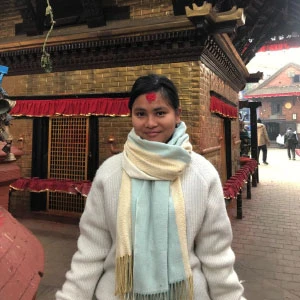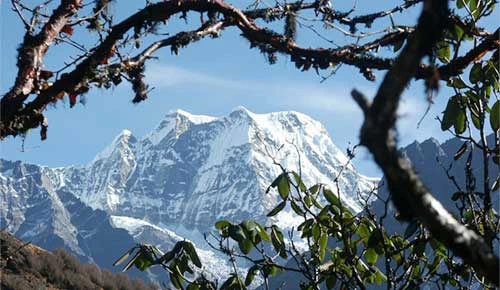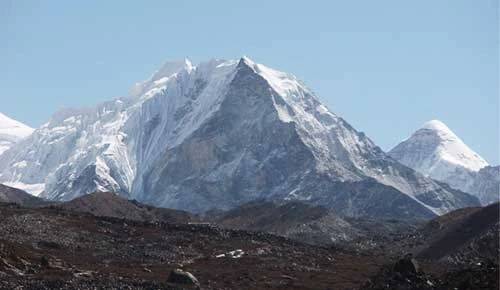Top Mistakes to Avoid During Island Peak Climbing
Introduction: The Thrill and Challenge of Island Peak (Imja Tse)
Island Peak (Imja Tse) (6,189 metres/20,305 feet) truly embodies its name as one of Nepal's most popular trekking peaks. It lies in the heart of the Khumbu region, surrounded by majestic Himalayan giants like Lhotse, Nuptse, Ama Dablam, and Makalu, and offering the perfect blend of trekking and mountaineering adventure.
For many trekkers, Island Peak serves as the perfect introduction to Himalayan climbing. It is challenging but not impossible, as it rewards climbers with unbelievable views of the summit and a feeling of accomplishment that is the result of a real expedition. Nevertheless, it is important to note that even though the given peak is considered a trekking one, it requires a good shape, proper preparation, and attitude to the altitude and weather conditions.
We'll discuss the most common mistakes climbers make on Island Peak and how to avoid them so you can reach the summit safely.
Why Island Peak Climbing Is Both Rewarding and Challenging
Island Peak, also known as Imja Tse (6,189 meters), stands as one of Nepal’s most popular trekking peaks. Situated in the heart of the Khumbu region, near Everest Base Camp, it offers climbers a perfect blend of adventure, breathtaking scenery, and technical challenges. The climb is often considered a stepping stone for aspiring mountaineers preparing for higher peaks like Ama Dablam or Everest. What makes Island Peak truly special is its balance — it’s both achievable for determined trekkers and demanding enough to test physical endurance, mental strength, and mountaineering skills.
Why Island Peak Climbing Is Rewarding and Challenging:
- Offers panoramic views of some of the world’s highest mountains, including Lhotse, Makalu, Baruntse, and Ama Dablam.
- Provides a genuine Himalayan mountaineering experience with ice climbing, rope work, and the use of crampons and harnesses.
- Combines both trekking and climbing adventures, making it ideal for those seeking more than a regular trekking journey.
- The summit day is physically demanding, involving an early start, glacier crossings, and steep snow climbs.
- Challenges climbers with high altitude, requiring proper acclimatization and mental resilience.
- Rewards with a sense of accomplishment that comes from reaching a technical summit in the Everest region.
- Offers exposure to Sherpa culture and Himalayan traditions during the approach trek through villages like Namche, Tengboche, and Dingboche.
- Serves as an excellent training peak for future high-altitude expeditions, building confidence and mountaineering skills.
- Tests endurance through long trekking days, cold temperatures, and unpredictable mountain weather.
- The final climb to the summit ridge is thrilling and scenic, presenting 360° views that make every challenge worthwhile.
- Provides an opportunity to push personal limits, making it both a physical and emotional journey of growth.
- Despite its challenges, the climb is accessible to fit trekkers with basic climbing training, making success attainable for many adventure seekers.
Island Peak climbing truly embodies the spirit of Himalayan adventure — a perfect balance of beauty and hardship that leaves climbers with lifelong memories, a renewed sense of strength, and a deeper connection to the mountains of Nepal.
Table of Contents
Top Mistakes to avoid during Island Peak Climbing
1. Underestimating Physical Fitness
Many trekkers make the mistake of thinking that their general trekking fitness is adequate for Island Peak. During the Island peak climb with EBC, the base camp trail will prepare you for the altitude, the summit push at Island Peak Base Camp will present some technical areas that will challenge your endurance, balance, and strength.
It takes a long time (10 to 12 hours) to climb Island Peak, and you have to use crampons, harnesses, and ropes in a technical way. If you're not in good shape, you can get tired real rapidly, especially when you get above 5,500 meters, where the air is very thin.
How to Prepare:
- Begin training 2-3 months before your climb.
- Do cardio exercises like running, cycling, or climbing stairs three to five times a week.
- Add strength training that focuses on your back, legs, and core.
- To build endurance, practice carrying a backpack that weighs 10 to 12 kg.
- To get your body used to higher altitudes, try altitude training or hiking at higher elevations if you can.
In the Himalayas, being fit means being safe. The better your shape and equipment, the more likely you are to reach the top and return safely.
2. Poor Acclimatization Strategy
Ignoring acclimatization is one of the most dangerous mistakes climbers make on Island Peak. The route typically follows the Everest base camp or Dingboche-Chhukung trail and then proceeds to Island Peak Base Camp, where time is taken to adapt to the elevation. However, individuals who are in a hurry to climb the mountain make the schedule too tight and develop acute mountain sickness (AMS), which spoils the climbing or turns out to be life-threatening.
How to Acclimatize Properly:
Spend at least two acclimatization days before reaching Island Peak Base Camp. Learn more about Acclimatization During the Everest Base Camp Trek to understand how your body adjusts to altitude.
Common rest stops:
- Namche Bazaar (3,440 m): Acclimatization day or trek to Everest View Hotel.
- Dingboche (4,410 m): Trek of Nagarjun Hill or Chhukung Ri altitude gain.
- Follow the “climb high, sleep low” rule whenever possible.
- Stay well-hydrated (3-4 liters of water daily).
- Take no alcohol and sleeping pills at altitude.
Tip: Always listen to your body. If you experience symptoms like headaches, nausea, or dizziness, descend immediately. The mountain will always be there; your health should come first.
3. Insufficient Equipment and Gear
Another common mistake is using poor-quality or ill-fitting gear. Many trekkers try to save money by renting cheap equipment in Kathmandu or relying on generic trekking gear. The top part of Island Peak, however, requires the use of specialized climbing gear, and a failure to have reliable equipment can make the climb unsafe.
Essential Gear for Island Peak:
- Mountaineering shoes (insulated, two-layered).
- Make sure to wear crampons that perfectly fit your boots.
- Harness and climbing helmet
- Carabiners and Ascender (Jumar).
- Ice axe
- Down jacket (-20°C) and thermal garments.
- Sleeping bag (up to -15°C)
- Use glacier-rated sunglasses and a strong headlamp for safety.
- Climbing gloves and gaiters
Pro tip: Test your gear before leaving Kathmandu. Ensure that crampons fit perfectly, your harness is comfortable, and you know how to use all technical tools properly.
4. Ignoring Technical Skills
While Island Peak is not an extreme climb, the final section is technically demanding. Most trekkers think it is simply an expansion of the EBC trek; however, the summit day is marked with some fixed ropes, crossing ladders, and steep ice slopes of up to 45-50 degrees. This climb may be risky and intimidating without experience.
What You Need to Learn:
- How to use crampons and ice axes efficiently.
- Ascending and descending fixed ropes using ascenders and figure-eight descenders.
- Crossing crevasses using ladders or safety lines.
- Learn about anchor points, knots, and essential safety checks.
- If you’re a first-time climber, consider a short pre-expedition training course in Kathmandu or the Khumbu region. You can also train on smaller mountain summits, such as Mera Peak or Lobuche East, before attempting Island Peak.
With these skills, you’ll feel more confident and safe during your summit push, especially in unpredictable weather.
5. Choosing the Wrong Season or Itinerary
Everything comes at the right time in the Himalayas. One of the easiest ways to fail or encounter bad weather is to climb Island Peak during the wrong season.
Best Time to Climb:
- Spring (March to May): Stable weather, warmer days, and clear views.
- Autumn (October to November): Cool temperatures, clear skies, and stable weather.
- Avoid monsoon season (June–September) due to slippery trails, leeches, and poor visibility. Likewise, winter (December–February) brings extreme cold and snow-covered routes, making the summit section unsafe.
Choosing the Right Itinerary:
- Follow a minimum 15–17-day itinerary to allow acclimatization.
- Add 1–2 buffer days for weather delays or rest.
- Choose a local guide or reputable trekking agency with proper logistics and safety protocols.
- A well-paced, weather-considered itinerary is critical for guaranteeing success and safety on Island Peak.
6. Neglecting Hydration and Nutrition
At altitude, dehydration and a poor diet can cause silent harm. Above 4,000 meters, many climbers lose their appetites, but your body burns up to 1,000 calories a day in the trekking and climbing process. Without proper hydration and nutrition, you’ll feel weak, dizzy, and more vulnerable to altitude sickness.
Stay Hydrated:
- Drink 3–4 liters of water per day; mix it up with herbal tea or soup.
- Use hydration salts or electrolyte tablets to maintain mineral balance.
- Avoid alcohol and caffeine in excess.
Eat Smart:
- Choose carbohydrate-rich meals for sustained energy (rice, pasta, potatoes).
- Add protein through eggs, lentils, or meat when available.
- Carry energy bars, nuts, and chocolate for quick snacks on summit day.
- Even when you don’t feel hungry, eat small portions regularly. Remember, your body is your engine; keep it fueled and hydrated.
7. Skipping Travel Insurance or Rescue Coverage
Numerous climbers underestimate the importance of comprehensive travel insurance, thinking “nothing will go wrong.” Regrettably, the conditions in high-altitude locations are unpredictable and injury or altitude sickness, as well as adverse weather conditions, may require an emergency evacuation.
Why Insurance Is a Must:
- Helicopter rescue in Nepal costs between $4,000 and $8,000.
- Altitude sickness or frostbite treatment can be expensive.
- Maybe shorten the provider list slightly for smoother reading.
What to Look For in an Insurance Plan:
- Coverage for high-altitude trekking and mountaineering (up to 6,500 m)
- Helicopter evacuation and emergency medical assistance
- Trip cancellation or interruption coverage
8. Disregarding Weather and Safety Advice
Even the fittest and most skilled climbers can face defeat if they ignore local weather conditions or guide advice. The Himalayas are unpredictable; storms, snowfalls or wind gusts can vary in a few hours.
Safety Rules to Follow:
- Always verify daily weather forecasts before summit day.
- If your guide advises against climbing, respect their judgment.
- Avoid “summit fever.” Knowing when to turn back can save your life.
- Carry a satellite communicator or walkie-talkie for emergency contact.
- Remember, success in mountaineering isn’t just about reaching the top, it’s about returning safely.
How to Reach the Summit Safely: Expert Tips
Reaching Island Peak’s summit safely requires more than physical preparation; it also requires smart choices, collaboration, and mental strength.
Follow These Expert Guidelines:
Climb with an experienced guide.
The local Sherpa guides are familiar with the route, crevasses, and rope sections like the back of their hands. Their experience is priceless when there is a technical stretch.
Start early on summit day.
The majority of the climbers start between 1:00 and 2:00 AM to avoid the afternoon winds and be able to get back in safety before it gets dark.
Pace yourself.
Move at a steady, comfortable pace, not too fast, not too slow. Relax and save energy for the steep glacier ascent and the last push over the ridge.
Layer your clothing.
Temperatures may fall to below -15°C. Use the layering system, which includes base, insulation, and shell, to make adjustments.
Stay mentally strong.
The final climb is a challenge to stamina and psychology. Calm down, take a deep breath, and do things one step at a time.
Celebrate responsibly.
When you have summited, take photos and enjoy the views, then descend carefully. Most of the accidents occur during the descent due to fatigue.
Insider Tips From Experienced Climbers
Experienced climbers of Island Peak often share key lessons from their expeditions. Their observations highlight what really matters for a successful and safe climb, from preparation and pacing to teamwork and awareness of mountain conditions.
- Even small mistakes on the climb can significantly affect success and safety.
- Respecting the mountain and understanding its challenges is essential.
- The final ascent’s steep ice wall requires careful pacing and full concentration.
- Teamwork and following the guide’s instructions are critical for a safe climb.
- Weather and conditions can change rapidly, so flexibility and patience are key.
- Proper preparation and mental readiness make the summit experience more rewarding.
- Attention to detail, including gear, acclimatization, and pacing, often determines success.
- The sense of achievement on the summit is magnified when climbers combine planning, focus, and endurance.
Conclusion
The Island Peak climb is an extraordinary experience that will give you Himalayan splendor and personal success. It is also a challenge that requires discipline, respect for the height, and careful planning. Avoid common mistakes such as skipping acclimatization, underestimating fitness, or ignoring technical skills or the weather, as these can make the difference between success and failure.
It is possible to reach the top of Island Peak if you get the right training, pick the right season, take safety precautions, and hire experienced guides. Keep in mind that every step you take on the mountain teaches you something. You need to be patient and keep going on this journey. The goal is to reach the top, which tests your strength and preparation.
Plan your trip to Island Peak with Nepal Trek Adventure and climb with confidence.







